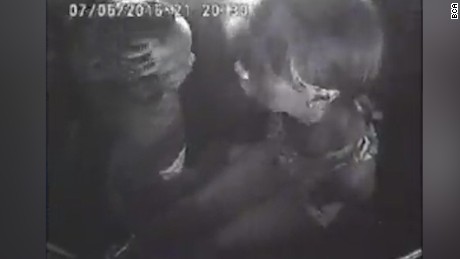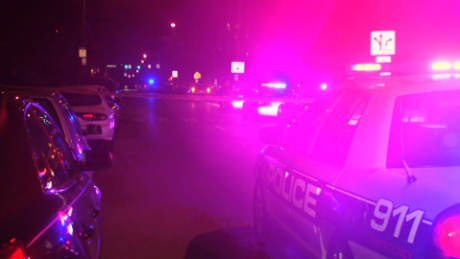Story highlights
- Experts say acquittals are due to various overlapping factors
- Such acquittals reveal insight into policing and the justice system
(CNN)When it comes to police-involved shootings, officers rarely stand trial and convictions are uncommon.
The murder trial of a former Texas officer for the death of a 15-year-old boy proved to be an exception. After hours of deliberations, a Dallas County jury convicted Roy Oliver of murder for fatally shooting Jordan Edwards in 2017.
Recent trials of police in the deaths of black men -- including Philando Castile, Terence Crutcher and Samuel DuBose -- have gone in the officers' favor. The Department of Justice said there was not enough evidence to charge the officers involved in Alton Sterling's death.
What do acquittals of officers in the deaths of people of color tell us about law enforcement and the criminal justice system? We spoke to several stakeholders in the debate for their takes.
Racial bias permeates law enforcement
In a call to dispatch, St. Anthony, Minnesota, Officer Jeronimo Yanez said he thought the people in Philando Castile's vehicle resembled two robbery suspects. Why? Because they were black and one had a "wide-set nose."
To many, it's clear evidence of how racial bias infects policing, and not just that night. Records show that law enforcement had pulled Castile over at least 52 times. He was charged with a number of low-level offenses, including driving without proof of insurance, but many of the cases against him were dismissed.
It's a common experience for people of color, said Wade H. McMullen, Jr., managing attorney of Robert F. Kennedy Human Rights, an advocacy group. It's rooted in policies, procedures and laws underpinning the justice system that disproportionately affect people of color, from stop-and-frisk policies and arrests for low-level crimes to mandatory minimums in sentencing.
Departments are starting to acknowledge this reality and address it through implicit bias training. But there's still a long way to go, McMullen said.
"We have to recognize that our society is imbued with racist unconscious bias across the board," he said. "When you compound that with laws designed to oppress communities of color, over-policing and hostile policing is almost always the result."
Police officers get the benefit of the doubt...
... and deadly force is in the eye of the beholder.
It starts with department standard operating procedures and policies, many of which let officers base their actions on their perceptions of danger, including the use of deadly force.┬Ā
The standard most departments use comes from a 1985 US Supreme Court opinion, though agencies are free to make their own rules and many do. Otherwise, deadly force may not be used "unless it is necessary to prevent the escape and the officer has probable cause to believe that the suspect poses a significant threat of death or serious physical injury to the officer or others."┬Ā
It continues into the courtroom, where defendants are presumed innocent until a verdict is rendered beyond a reasonable doubt (a higher burden of proof than probable cause). State laws vary but the federal statute used to evaluate police shootings requires a finding that the officer willfully or intentionally sought to kill someone.┬Ā
But when the victim is dead and the officer is claiming the person flashed a gun or made a sudden move, jurors tend to side with the officer, said Kristen Clarke, president and executive director of the Lawyers' Committee for Civil Rights Under Law.
It shows tremendous progress that local prosecutors are shoring up the political will to pursue these cases, she said. But the results are likely to be the same as long as the law favors officers and the underlying issues aren't addressed.
"At the end of day, officers in their badge and uniform enjoy the benefit of the doubt. But none of that should distract us from the root cause of the crisis we face ... (which is) the racial bias that infects many aspects of policing in our country," she said.
"Unless we start holding officers accountable for using deadly force in a reckless manner, I think it will be very difficult to see changes in the use of lethal force at the outset."
Jurors see evidence in a different light than the public
Sitting through hours of police testimony and dashcam footage gives jurors rare insight into how policing really works in the United States. It's seldom as dramatic as it appears on television, but it's still a dangerous job -- especially in the United States, where guns are rampant and, as recent events demonstrate, there's no telling when or where someone will open fire.
Eventually, jurors start to see evidence from an objective standpoint, said Maria Haberfeld, a professor of police science at John Jay College of Criminal Justice in New York.┬Ā
Add to the mix standard operating procedures and state laws that let officers act based on their perceptions of danger and it's easy to understand why jurors acquit if they're following the letter of the law, she said.
"Use of force never looks pretty no matter how justified it is and use of force looks horrendous when it ends up taking someone's life," she said.┬Ā
"For the public it's hard to be objective and not emotional because they don't see all the evidence. But the jury sees different information and they look at it and evaluate and analyze it in a much less emotional way, and this is why we have these acquittals."
Police departments need higher recruitment standards and more training
Officers make the decision to shoot in a matter of seconds, if that. Often, they're not equipped to make the decision to spare lives, said Haberfeld, the author of several books on police integrity.
Haberfield provides leadership training to multiple agencies, including the NYPD, and she says she sees it time and again.
Departments across the country have changed recruiting standards over the years to open the ranks. If Haberfeld had it her way, she would stop the calls for combat veterans, given their shoot-to-kill training. She would stop the recruitment of people of color for the sole purpose of increasing diversity regardless of their qualifications. She would raise the minimum age to the mid- to late-20s so prospective officers have time to develop emotionally.
And, once they're in, she would like to see more training time beyond the standard 15 to 17 weeks. "It's like a semester, not even. It should be treated as a profession, something you spend time on and grow into," she said.┬Ā
"We have an overwhelming emphasis on use-of-force skills and very relatively few hours dedicated to other skills like communication or problem-solving.
"Then people keep asking why things go wrong. I always say I'm surprised they don't go wrong more frequently."
Officers have an extremely tough job
From a law enforcement perspective, what gets lost in the debate is the high-stress environment that officers encounter every day, said Chuck Canterbury, the national president of the Fraternal Order of Police.
The demonization of officers in media coverage of police shootings contributes to the feeling of being under attack, Canterbury said. The spread of videos on social media and the ensuing outrage compound the effect.
Officers bring these feelings to bear when facing down a suspect or a person of interest. At the end of the day, officers are humans, too, he said. Despite what others may think, Canterbury insists that even the best training in the world can't prepare officers for every high-stress situation, he said.
"That's why the bar is set so high," Canterbury said.
"No matter what you do, people have to realize that you cannot train human emotions. You cannot train fear, you cannot train anxiety or adrenaline rushes out of people. Those are natural reactions."
Canterbury agrees that more training hours and higher recruiting standards are needed. But there's a political reality that must be faced: the need to fill ranks and get officers on the streets to ensure public safety.
"We support as much training as physically possible while keeping people on the streets in light of the severe shortages departments are facing. We're down 100,000 officers," he said.
Training is often the first thing to be sacrificed.
"Our main responsibility is to protect life. There's merit in saying the standards should be high, but someone needs to figure out how to get applicants into this profession."

























